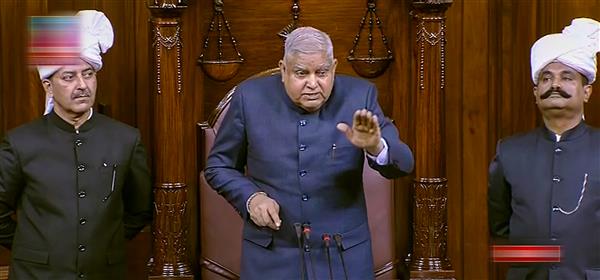
The tweet by the Vice President of India on 7 December 2022 stating that “the historic NJAC Bill, passed unanimously by the Parliament, was undone by the Supreme Court using the judicially evolved doctrine of ‘Basic Structure’ of Constitution. There is no parallel to such a development in democratic history of the world”, has exposed the rift between the government and judiciary over the mechanism of appointing judges through the Collegium system of the Supreme Court.
The SC’s Collegium system for appointing and transferring judges has gradually evolved from three judgments known as the judge’s case. In SP Gupta v. UOI [First Judges Case, (1981) Supp SCC 87], Justice Venkataramiah, in his verdict, penned that under Article 217, the President is vested with the power to appoint a High Court Judge. While the President is bound to consult and consider the opinions of the authorities mentioned therein, he is not bound by their opinions. SC suggested that a collegium must recommend the President to appoint an SC or a High Court Judge and ruled that the CJI was not entitled to primacy in case of a difference of opinion, thus giving the executive primacy in the appointment of judges. However, in SC Advocates-on Record Association vs Union of India, [Second Judges Case, (1993) 4 SCC 441], the 9-judge bench of SC partly overruled the Gupta’s judgment and held that the CJI had primacy in case of difference of opinion and introduced the collegium system, holding that “consultation” really meant “concurrence”. In re Special Reference 1 of 1998, [Third Judges Case, (1998) 7 SCC 739], the 9-judge bench of SC further explained the meaning of the expression “consultation with the CJI” under Articles 217(1) and 222(1) by holding that it requires consultation with a plurality of judges in the formation of the opinion of the CJI and not his sole individual opinion. Upon President’s reference, SC expanded the Collegium to a five-member body comprising the CJI and four of his senior-most colleagues. Since then, the recommendation for appointment and transfer of judges across High Courts by the collegium of five seniormost judges of SC has been the law of the land.
Nevertheless, the mechanism of appointment by the Collegium of SC has been marred by allegations of opacity, lack of transparency and social diversity in their recommendations. To overcome criticisms, the government promulgated the National Judicial Appointments Commission Bill, 2014 [NJAC], in conjunction with the Constitutional (121st Amendment) Bill, 2014. The NJAC comprising six persons [CJI, Two senior judges of the SC next to CJI, Union Minister of Law, and Two eminent persons], was to replace the Collegium system.
Since the provisions of NJAC stipulated sharing of wisdom of appointment of judges with the political executive and further sought to give politicians and civil society a final say in the appointment of judges to the highest courts, SC struck down the NJAC and the Constitutional amendment in 2014 by holding that the judiciary could not risk being caught in a “web of indebtedness” towards the government.
The striking down of NJAC created a wedge between the judiciary and the government, leading to a phase where the names recommended by the Collegium were either sent back by the government for reconsideration or a stoic silence was maintained without accepting or rejecting the recommendations, contributing to large vacancies across India.
Recently, an unhealthy debate erupted in the public domain wherein the government accused the Collegium system of being opaque and unaccountable, while the SC criticized the government for delaying and ignoring the Collegium’s recommendations. The argument reached a stage where the VP’s office tweeted the above statement and also tweeted that “we need to bear in mind that in a democracy, basic of any ‘Basic Structure’ is the primacy of the mandate of the people reflected in the Parliament” on the same day.
Whilst the government is entitled to an opinion concerning striking down the NJAC, care should be taken that such an opinion does not undermine the SC’s power of judicial review by drawing parallels with the democratic history of the world without naming any specific country. It has to be borne in mind that India is not governed by parliamentary supremacy like the UK, which lacks a written constitution.
The vacuum created by the absence of a written constitution in a country like the UK is filled by the doctrine of parliamentary supremacy. In such countries, the courts do not have the power to amend or repeal any law questioning the validity of the laws made by the parliaments. Thus, comparing the power of judicial review by SC with the courts in countries without a written constitution is like comparing apples and oranges.
Even in the absence of a written constitution, the seeds of judicial review in the UK were sowed long back in 1610 in Bonham’s Case, wherein Sir Edward Coke, Chief Justice of England’s Court of Common Pleas, declared that “when an act of parliament is against common right or reason, or repugnant, or impossible to be performed, the common law will control it and adjudge such act to be void.”
In the US, a democracy governed by constitutional supremacy, the courts have exercised powers of judicial review to strike down a law inconsistent with constitutional values. In Marbury v. Madison, the US Supreme Court established the principle of judicial review in the United States, confirming the powers of American courts to strike down laws and statutes inconsistent with the constitution.
The power to strike down a law if it does not conform with the constitutional principles cannot be distinguished by narrowing down the expression ‘basic structure’ of the constitution, which includes the supremacy of the constitution and the independent judiciary as an essential part. Therefore, the SC is well within its powers to declare a law unconstitutional if it interferes with that structure. Similarly, the law settled by the SC in the judge’s case cannot be considered beyond the powers granted to the SC by the constitution itself under Articles 141 and 142.
The conflict over the mechanism of appointment of judges can be resolved by mutual understanding and consultation, which should take place at the earliest, failing which not only the vacancies will soar, but brilliant minds will also be discouraged from accepting judicial appointments. Until legislation to replace the Collegium system is enacted, the recommendations made by the Collegium should be respected by deliberating and deciding upon them at the earliest. Also, steps should be taken to avoid public confrontation, which undermines the authority of both the SC and the government.
Akhilesh Sheshmani Dubey is an advocate and solicitor practising in Bombay High Court.















